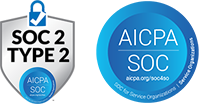What Is Gig Economy?
The Gig Economy is a labor market built on short-term contracts, freelance projects, or on-demand tasks instead of permanent, full-time roles. Workers are paid per “gig” (a ride, a delivery, a design sprint) and often manage multiple income streams. For HR and People Analytics teams, it means tracking a blended workforce—employees plus contractors—with consistent rigor around cost, compliance, and performance.
Why Gig Economy Matters
Talent needs shift faster than headcount budgets. The Gig Economy lets organizations scale skills up or down quickly, access niche expertise, and test roles before hiring. But it also brings classification risk (employee vs. contractor), scattered data, and culture gaps. Managing gigs with the same analytical discipline you apply to employees keeps agility without chaos.
Where Gig Economy Is Used
- Tech & Product: UX designers, developers, data scientists on time-bound sprints.
- Marketing & Creative: Copywriters, videographers, and SEO specialists on campaign cycles.
- Logistics & Retail: Seasonal pickers, drivers, or customer-service reps during peaks.
- Healthcare & Education: Per-diem nurses, adjunct faculty filling schedule gaps.
- Professional Services: Independent consultants handling overflow or specialized projects.
Gig Economy Key Benefits
- Agility: Rapid access to skills without long hiring cycles.
- Cost Flexibility: Pay for outcomes, not idle capacity; OPEX stays variable.
- Innovation Boost: External experts inject fresh thinking and proven playbooks.
- Geographic Reach: Tap global talent unconstrained by office locations.
- Data Signals: Contractor performance and cost data feed better buy/build/borrow decisions.
Best Practices & Examples
- Clear Classification Rules: Align with IRS and DOL guidelines; misclassification penalties are steep.
- Unified Talent Dashboard: Track contractors and employees in one view—spend, tenure, productivity.
- Standardized On/Offboarding: NDA, security access, and knowledge-transfer steps prevent leaks and rework.
- Outcome-Based Contracts: Define deliverables, KPIs, and review cycles up front.
- Talent Pools & Marketplaces: Build pre-vetted gig rosters; post internal “micro-gigs” so employees can stretch before you outsource.
- Example: A fintech firm used an internal gig marketplace for data-cleanup sprints, cutting external spend 22% and uncovering hidden internal skills.
Conclusion
The Gig Economy is here to stay—reshaping how work gets done and how HR measures it. By setting firm compliance guardrails, centralizing data, and judging gigs by outcomes, organizations gain flexibility without losing control. Pairing these practices with People Analytics keeps strategy, cost, and culture aligned across every type of worker.
Gig Economy FAQs
Q: What do you mean by gig economy?
The Gig Economy is a labor market of short-term, project-based, or on-demand work where individuals are paid per task rather than holding traditional full-time roles.
Q: What is gig full form?
“Gig” isn’t an acronym; it’s slang for a job or performance. In work contexts it simply means a discrete assignment or project paid per deliverable.
Q: Is India a gig economy?
India has a fast-growing Gig Economy—drivers, delivery partners, freelancers—driven by digital platforms and startups. However, regulations and social protections are still evolving by state and sector.
Q: Is gig economy good or bad?
It’s both: good for flexibility, speed, and access to skills; risky for income stability, benefits, and worker protections. For employers, it offers agility but requires strong compliance and data oversight.




